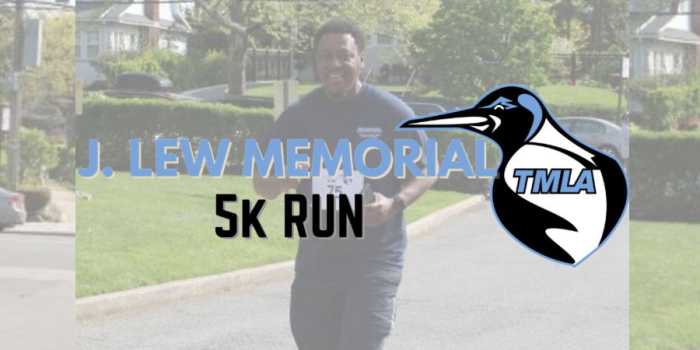
Kew Gardens Jail (Source: Office of the Mayor)
Sept. 18, 2018 By Tara Law (Edited 9/19)
A number of Kew Gardens residents have come together to launch a campaign to block the reopening and expansion of the Queens House of Detention.
About 25 residents have formed the Community Preservation Coalition, a group that aims to stop the Mayor’s plan to reopen the shuttered 126-01 82nd Ave. facility.
The group is comprised of many of the same people who led the successful effort to the save the Lefferts Boulevard Bridge, according to coalition member Dominick Pistone, who also heads the Kew Gardens Civic Association.
The coalition argues that the mayor’s proposal for a 1,500 inmate jail at the Kew Gardens site— adjacent to Queens Borough Hall and the District Attorney’s Office— would be out of scale with the surrounding buildings and exacerbate traffic in the neighborhood.
Pistone said the mayor is calling for a “monster facility that’s totally out of scale with the neighborhood.”
The coalition intends to launch a public awareness campaign after the City holds a public hearing on the project next week, Pistone said.
The hearing, which will be held at Queens Borough Hall at 6 p.m. on Sept. 26, is part of the Environmental Review Process that is required for the site to be rezoned. The public will have the opportunity to hear more about the project and to ask questions.
The City needs to rezone the site for the jail expansion to move forward.
The group launched a petition against the jail on Sept. 18, and Pistone said the group and will begin to distribute fliers about the group’s concerns in coming weeks. He said the coalition knew that the City was considering reopening the jail, but was shocked as to the scale of the expansion.
While the existing structure is 497,600 square feet and housed about 500 inmates, the new facility would be 1,910,000 square feet and house 1,510 inmates.
The Kew Gardens Jail reopening is part of the mayor’s plan to close the massive Rikers Island jail complex, and replace it with four borough-based “community jails.” There would be a facility in Manhattan, the Bronx, Queens and Brooklyn.
The mayor’s office argues that the new jails would be smaller and safer, and detainees would be housed closer to their lawyers, the courts and the community.
Pistone said that he is in favor of reforming the justice system; however, he said, jails should not be put in residential areas. He argues that the City should invest in the existing facilities on Rikers Island.
The coalition plans to put pressure on Council Member Karen Koslowitz and other elected officials to stop the project. Pistone said that he would like to see the project postponed until de Blasio’s term ends, so that the next mayoral election can become a referendum on community jails.
However, the jail has garnered the support of many local leaders, including Koslowitz. The council member was among the city officials to release a statement of support for the project after details about the jail were released on Aug. 15.
Although Koslowitz initially expressed reticence about the project, she agreed to back it if the city ceased to house the homeless at the Kew Gardens Comfort Inn, Koslowitz spokesperson Michael Cohen said earlier this year.

The city plans to move all of the homeless individuals out of the Comfort Inn in February, Cohen said today.
When asked if Koslowitz was aware of the size of the jail before the mayor’s plan was released, Cohen responded in a statement, “The Councilwoman anticipated that the new jail would be larger than the old Queens House of Detention, but was not aware of the exact number of units.”
Cohen said that Koslowitz encourages the community to engage in the review process.
According to Cohen, Koslowitz “urges all residents to become familiar with plan and voice their opinions and suggestions, if any.”
14 Comments







Changing a location of a building will not change anything. It is the system that’s the problem. Just look at the Raise the Age Law. In its first day at a new facility there were a number of bloody clashes between the 16 and 17 year olds. Proof right there that change of venue did not make things any better. The last thing our neighborhood needs is a 29 story jail. By the way, why is Staten Island not mentioned for a new jail? Plenty of open space there.
Surely there is not enough traffic near the intersections of Queens Blvd, Union Turnpike, Van Wyck Expressway and Main Street. Hey, while we’re at it, let’s move the SSA office to the area and open up a DMV branch as well. Surely this won’t create any gridlock at all.
How does building a new mega jail structure in a residential community fix a broken system regarding inmate treatment? Why don’t we build new highways because there are problems with traffic enforcement?
I’m sure we can all agree that inmates deserve humane treatment, but this proposal smells like a secret real estate deal. Let’s all unite behind a common cause: transparency from our elected officials. Remember, they’re spending OUR tax dollars!
Our HACK ELECTED OFFICIAL, Councilmember Karen Koslowitz, whose district includes the Queens Detention Complex and municipal parking lot (where the jail will be placed), touted the plan as a potential gain for the community.
EXPLAIN, how this will bring economic development and provide parking spaces for our community. We have already seen the crap that the homeless shelter here has brought. NOW picture all that CRAP on steroids. MORE LITTER, MORE PROBLEMATIC PEOPLE HANGING AROUND OUR COMMUNITY, MORE LOITERING, MORE TRAFFIC/CONGESTION, and MORE CRIME. YOU CAN COUNT ON IT.
So remember Koslowitz’s word come election time. Here is her contact information:
118-35 Queens Boulevard, 17th Floor
Forest Hills, NY 11375
718-544-8800 phone
718-544-4452 fax
Koslowitz@council.nyc.gov
https://thefilthofforesthillsqueens.wordpress.com/
“Closing Rikers Island and opening community-based facilities is not only beneficial for New York City’s corrections officers and incarcerated population, but also beneficial for the Kew Gardens community,” she said. “The new facility in Kew Gardens will bring significant economic development and provide hundreds of new parking spaces for the community.”
Wouldn’t the money be better spent on fixing our failing schools, public transportation, housing and mental health for the homeless and our decaying infrastructure?
This is going to cost $30 BILLION tax dollars. Just the interest on this is going to crazy. With failing schools, MTA falling apart, no money to fix bridges/roads, homeless and mentally ill people don’t have the help they need, the list goes on and on., I ask the Mayor and his supporters…Where are your priorities????
I don’t want dangerous criminals like Paul Manafort or Rick Gates living in my backyard!
And thus begins the NIMBY campaign against the closure of Riker’s Island, to be repeated in all five boroughs at every site of a proposed detention center.
Closing riker’s won’t fix the problems at riker’s. The City needs to manage the situation better before telling residential neighborhoods to accept 1500 inmates.
It seems to me that I have been hearing this same argument forever about any type of group home, shelter, jail, or other facility that is perceived as a negative addition to the community. We have an ethical obligation to House and care for all members of our society, not only those whom we deem worthy of being admitted to our community.
Yes, we have an obligation to take care of them, and we should. But how have you missed the city’s collosal failure when it comes to the homeless shelters? We have been throwing money at homelessness for decades and the only people who have been helped are the shelter operators. Do a FOIL request for performance evaluations for some of these shelter operators and you will quickly learn that they are terrible and don’t meet contract standards for providing services, but we taxpayers keep funding them. Why is that OK? The City has underreported the amount of violence in and around the shelters, and they only admit to problems when there are high profile incidents (staff found selling drugs to residents of the shelter, violent fights that leave residents dead, etc.) Idealism has no place in this discussion. We need to hold the City accountable for failing the residents of the shelters and the surrounding communities. And we should oppose community jails until the City provides an actual plan for dealing with the problematic conditions AT RIKER’s. Will there be new staff? New training? What, exactly is the plan for making it better? Additional security in the surrounding areas?
No one is saying don’t house or care for members of our society that are deemed unworthy, though you may want to use that statement to the mayor and other elected officials who are doing absolutely NOTHING in regards to the mentally ill and making sure that the homeless get the social services that are needed to get them out of homelessness, as opposed to warehousing the homeless, which is what this mayor is doing. BUT this area is no place for a jail, the congestion and traffic alone would be a nigghtmare. This is us common sense logistics. AND we have already seen what happens to communities when homeless shelters, etc are placed in those said communities without proper security, etc. NOT too mention the price tag on this that could be serve the city with infrastructure, housing, etc.
Ask the Jamaica Community and SE Queens how they feel about the over 20 homeless shelters that were dumped into their community, even when the homeless population in those communities are low.
https://thefilthofforesthillsqueens.wordpress.com/
I am for Jail reform, but moving a jail to a residential community is certainly not the solution.
This is a great idea. Given the low rise zoning laws for the majority of structures in the area, the inmates will be treated to the best views for miles around even if the building is only 15 floors. Spending a few billion dollars to create access to an inconvenient slab by reconstructing existing highway exits and rerouting traffic and public transportation for 1,510 new inmates would make them feel important and go a long way towards rehabilitation and feeling wanted. Why keep a problem confined one place and build some courthouses there when you can create four massive problems in residential neighborhoods?